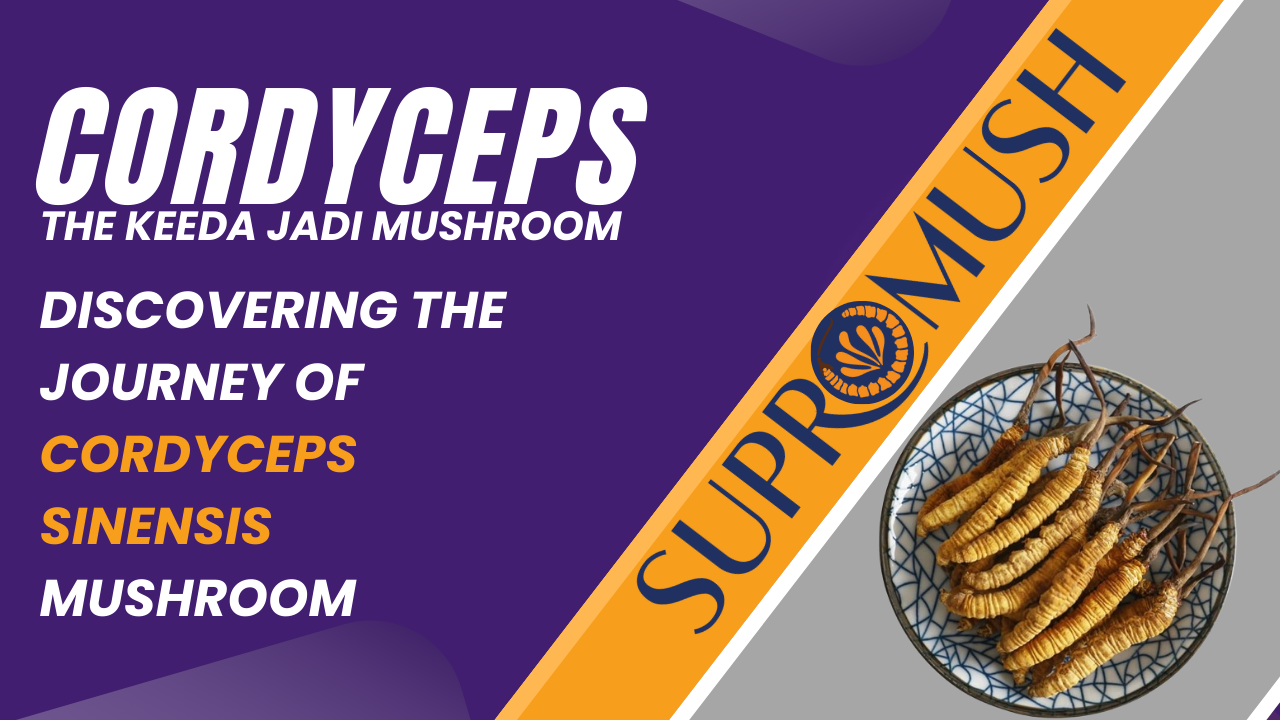
From Harvest to Market: Discovering the Journey of Cordyceps Sinensis Mushroom
Join us on an exciting adventure as we explore the fascinating journey of the Cordyceps Sinensis mushroom—from its natural habitat to its arrival in the market. This incredible fungus has captivated people for centuries with its unique properties and benefits. Ready to dive into the world of this magical mushroom? Let’s get started!
What is Cordyceps Sinensis?
Cordyceps Sinensis, often called caterpillar fungus or "winter worm, summer grass," is a special medicinal mushroom that grows in high-altitude regions like the Tibetan Plateau and the Himalayas. It’s a parasitic fungus that targets the larvae of certain moth species.
Where Does It Grow?
Cordyceps Sinensis thrives in chilly, high-altitude areas, between 3,000 and 5,000 meters (9,800 to 16,400 feet) above sea level. You can find it in places like Nepal, Bhutan, Tibet, India, and parts of China. The harsh conditions of these regions—cold temperatures and low oxygen—make it a challenging environment for most organisms.
How is It Harvested?
Harvesting Cordyceps Sinensis is no easy task. It happens during late spring and early summer when the mushrooms pop up from the ground. Here’s a look at the process:
- Finding the Fungus:
- Local harvesters, often from indigenous communities, search for the mushrooms in alpine meadows and forests. The fungus blends in with its surroundings, making it hard to spot.
- Cleaning and Sorting:
- Once collected, the mushrooms are cleaned to remove soil and other debris. They’re then sorted to ensure only the best quality specimens make it to the next stage.
- Drying:
- Drying is crucial to preserve the mushroom’s medicinal properties. Traditionally, the mushrooms are air-dried in the shade or using low temperatures to remove moisture while keeping their beneficial compounds. This drying process can take several days to weeks.
- Packaging and Distribution:
- After drying, the Cordyceps Sinensis is packaged and prepared for distribution. It’s available in various forms, such as whole mushrooms, powders, or as an ingredient in herbal products.
Cultivating Cordyceps Sinensis
Due to its high demand and the decline in wild populations, people have started cultivating Cordyceps Sinensis in labs. This involves creating the right conditions to grow the fungus artificially, known as Cordyceps militaris.
Processing and Manufacturing
Here’s what happens next:
- Extraction:
- After drying, the mushrooms are processed to extract their bioactive compounds. This can be done using hot water, alcohol, or a combination of both. The extraction pulls out valuable components like polysaccharides and nucleosides.
- Formulation:
- The extracted materials are then turned into various forms for consumption, such as powders, capsules, or liquid extracts. Additional ingredients might be added to improve stability or effectiveness.
- Quality Control:
- Throughout the process, quality control is essential. This includes testing for contaminants and ensuring that the product contains the right amount of beneficial compounds.
Conclusion
The journey of Cordyceps Sinensis Mushroom from its natural, high-altitude home to the market is both remarkable and complex. From the challenging harvest in the Himalayas to the careful cultivation and processing, this mushroom undergoes an incredible transformation. Its well-researched medicinal properties have earned it a place in the global market, showcasing nature’s ability to offer valuable resources while highlighting the need to balance conservation with commercialization.
Explore the world of Cordyceps Sinensis and discover how this extraordinary fungus continues to make an impact around the globe!